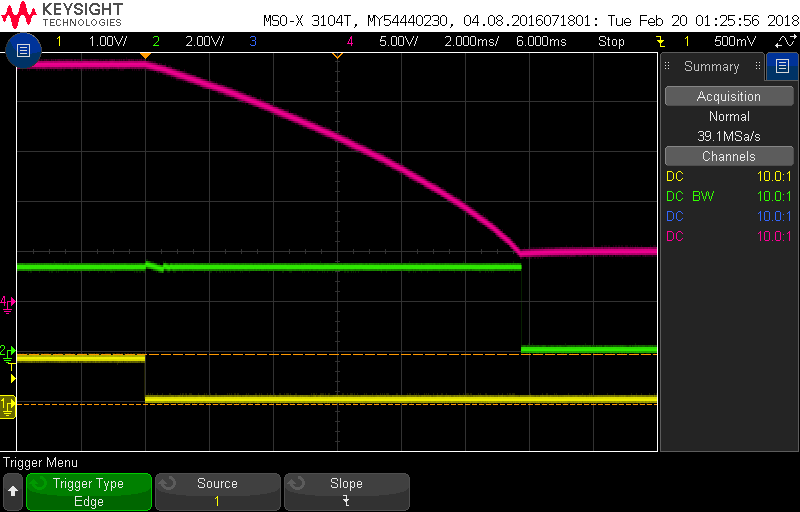Other Parts Discussed in Thread: LM5069
I have proto boards using the TPS2490 where the PG is used for downstream control of regulators as advertised. Going by the datasheet statement in SLVS503E, PG is false (low) whenever the voltage across the pass MOSFET exceeds 2.7V or UVLO is active. In the screenshot below, the PG does not react to either of the stated conditions (yellow is EN input, green is PG output, Red is the MOSFET source voltage). Per the datasheet statement in 7.3.9, PG should have gone low at where the source voltage crossed 21.3V down where Vds exceeds 2.7V (about 2msec following EN falling edge), no mention of the delay.
More disturbingly, the functional block diagram at 7.2 shows EN and UVLO AND'ed together to produce the Enable signal, but no connection to the PG signal path in support of the statement in 7.3.9.
Is there anything not shown in 7.2 that bypasses the 9msec timer and trips the PG on power down? I've got switchers going into starvation since the PG does not reflect the state of the power at the MOSFET source. I'd have to add a boatload of capacitance on the load side to keep them from starving for 15msec (maximum timer spec). PG cannot be used for downstream control of regulators like this.


